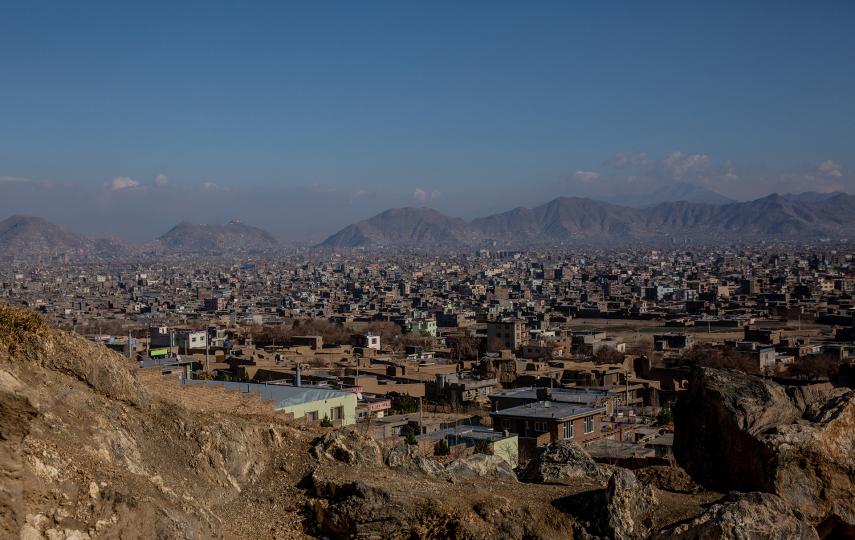NAIROBI
Maureen Akinyi, a 14-year-old Kenyan pupil who had dropped out of school following the death of her parents four years ago, is now back in class thanks to Kenya’s free primary education initiative.
"I would still be at home, because my aunt who took me in after my parents died could no longer afford to pay for my fees," said Akinyi, a class-seven pupil at Ayany Primary School in Kibera, a sprawling shantytown in the Kenyan capital of Nairobi. Kibera is said to be one of the largest slums in Africa, with hundreds of thousands of residents.
Akinyi, who spent a year out of school, is now in class with 70 other students. Her story is similar to that of many children who were forced to leave school - most because their parents were too poor to pay the fees.
While Kenya’s free primary education policy has obvious benefits, the influx of new students since the programme was implemented in 2003 has put considerable strain on available facilities. At Ayany school, for example, some 1,055 girls share 10 toilets. Average class size is 98 pupils, a daunting task for any teacher. The sheer numbers have certainly affected the quality of education.
Some of the new students had grown up on the streets without any parental guidance. For them, discipline is a new concept. "We had a really hard time trying to socialise some of these children, who had been living on the streets all their lives," said Elisheba Khayeri, head teacher at Ayany. "We had to teach them how to use the facilities, such as the toilets, and how to keep them clean," she added. Some of the children who had come from the streets found school life too regimented and dropped out.
Ayany Primary School has 28 teachers for 2,022 pupils, far short of the recommended minimum of 40 teachers. A teacher-to-pupil ratio of 1 to 50 would be tolerable, according to teachers in the school.
Ruth Owuor, a government education officer, said many children with special needs, including orphans and those with disabilities, were still not attending school in Kibera. High levels of poverty in the slum meant that many other children had to work to supplement family incomes, thus missing out on the chance to go to school, she added. Many children in Kibera are engaged in petty trade, such as roasting maize or selling vegetables. Even though education is free, families are still required to buy school uniforms, meet transport costs and pay the cooks in schools that have feeding programmes. These costs are prohibitively expensive for some households.
The problem of HIV-AIDS in Kibera also impedes efforts to increase enrolment because some children whose parents are suffering from AIDS must stay home to take care of them, Owour said.
New teaching methods
In a bid to lessen the burden of teaching so many children in such crowded settings, teachers at Ayany have come up with creative teaching methods, which vastly differ from the regimented teaching style still used in most schools around the country.
"We encourage them to talk in class, as they discuss what they may not have grasped during the lesson at their own level and pace - using the language they best understand. We do not consider this noisemaking," said Mary Macharia, a first-grade teacher. The children also participate in peer tutoring, which helps them gain a sense of self-awareness and confidence. Teachers also allow children to write on the blackboards, which helps identify slow learners who may need special attention. "Ability grouping" enables teachers to tailor lessons more effectively.
Children at the school are also introduced to basic HIV/AIDS awareness, hygiene and caring for orphans. There are 500 orphans in the school, most of them having lost their parents to AIDS.
According to Robert Prouty of the World Bank's universal primary education initiative, Kenya's free primary education is a positive development, despite the challenges. The bank contributed funds to buy textbooks when the policy was introduced in Kenya. It plans to continue funding such initiatives in developing countries. To improve accountability, Prouty suggested that funding be channelled directly to schools instead of through the government.
This article was produced by IRIN News while it was part of the United Nations Office for the Coordination of Humanitarian Affairs. Please send queries on copyright or liability to the UN. For more information: https://shop.un.org/rights-permissions
![Pupils in class at Ayany primary school, Kibera, Nairobi [Kenya] Pupils in class at Ayany primary school, Kibera, Nairobi. [Date picture taken: 04/05/2006]](https://assets.thenewhumanitarian.org/s3fs-public/images/20064112.jpg)




